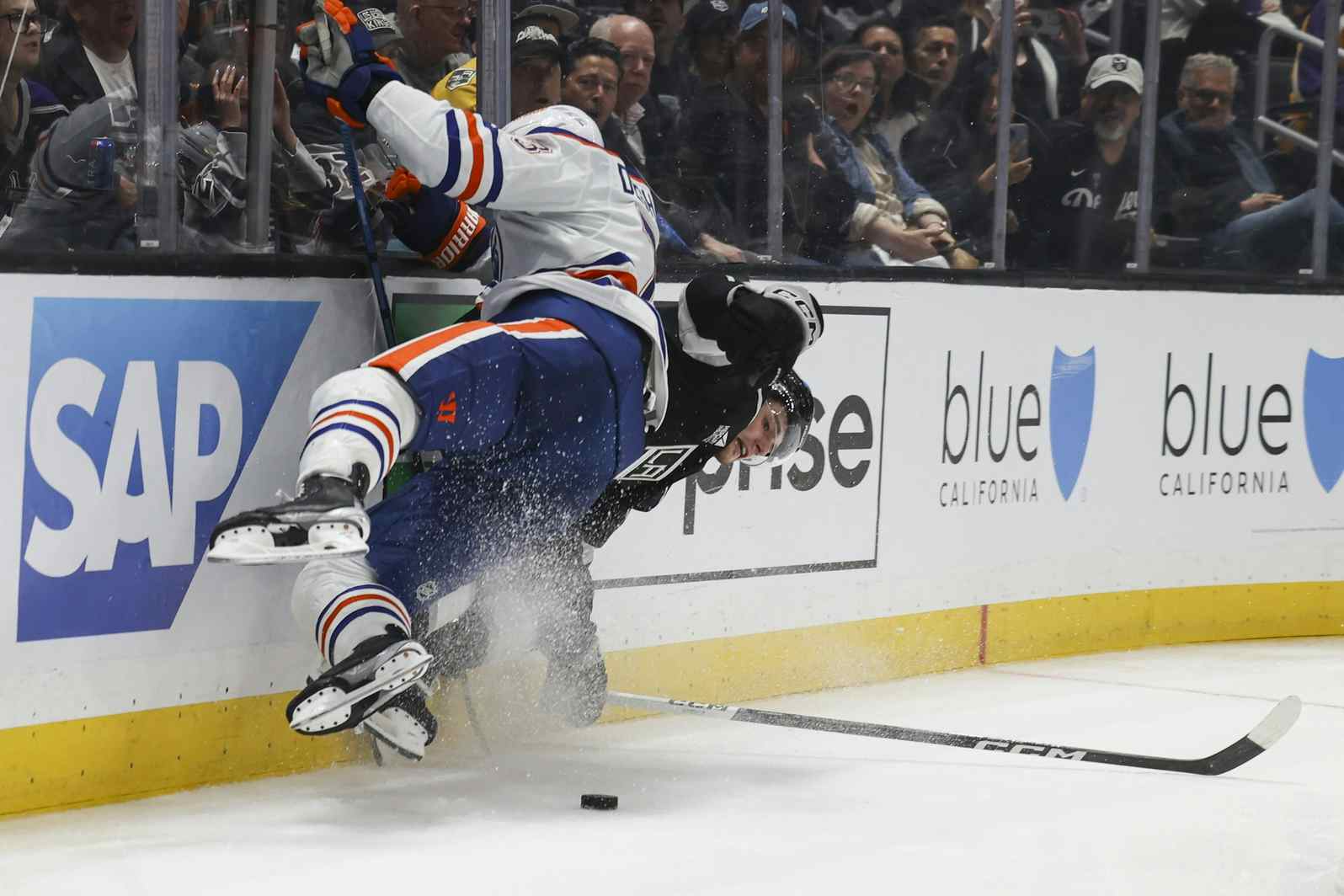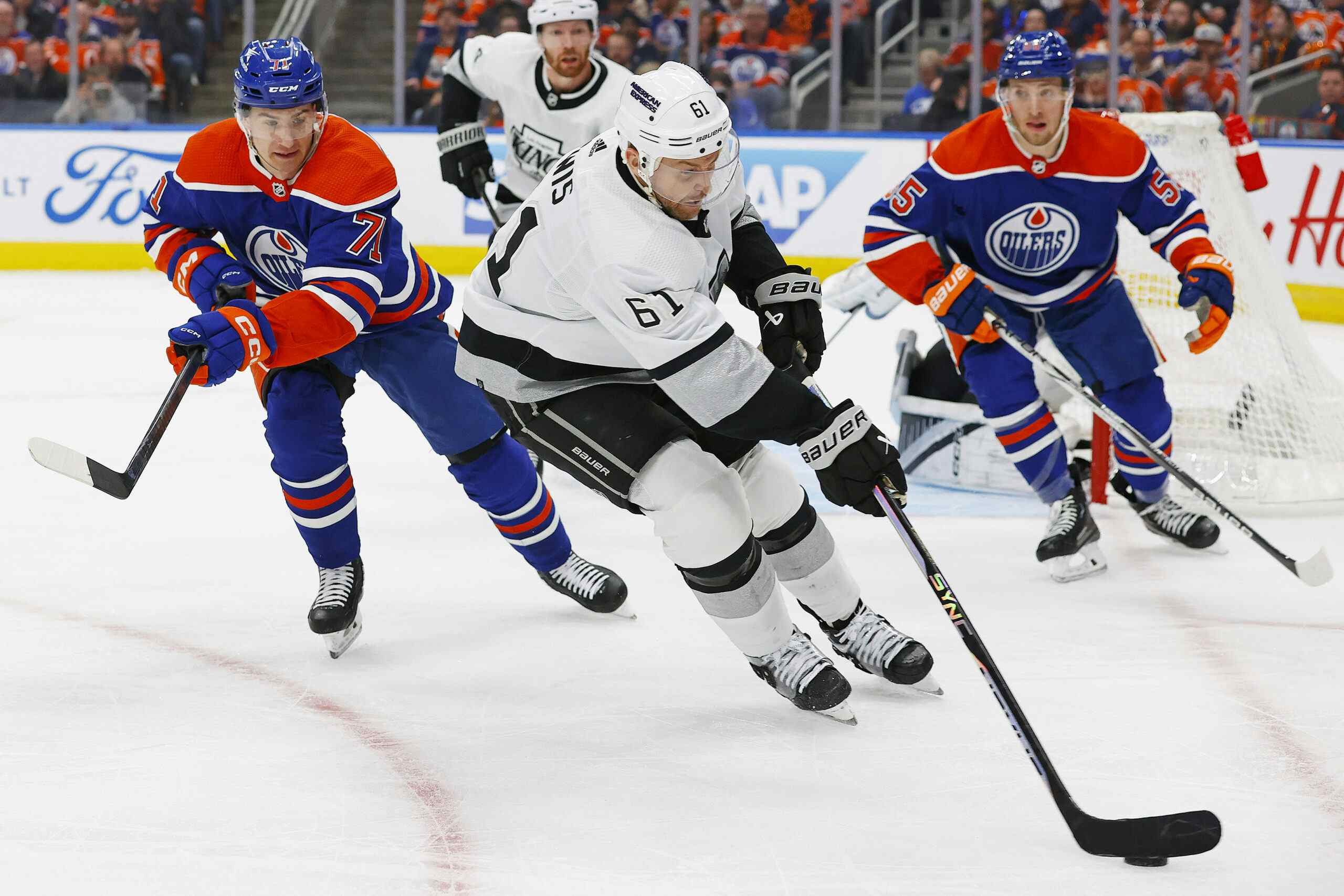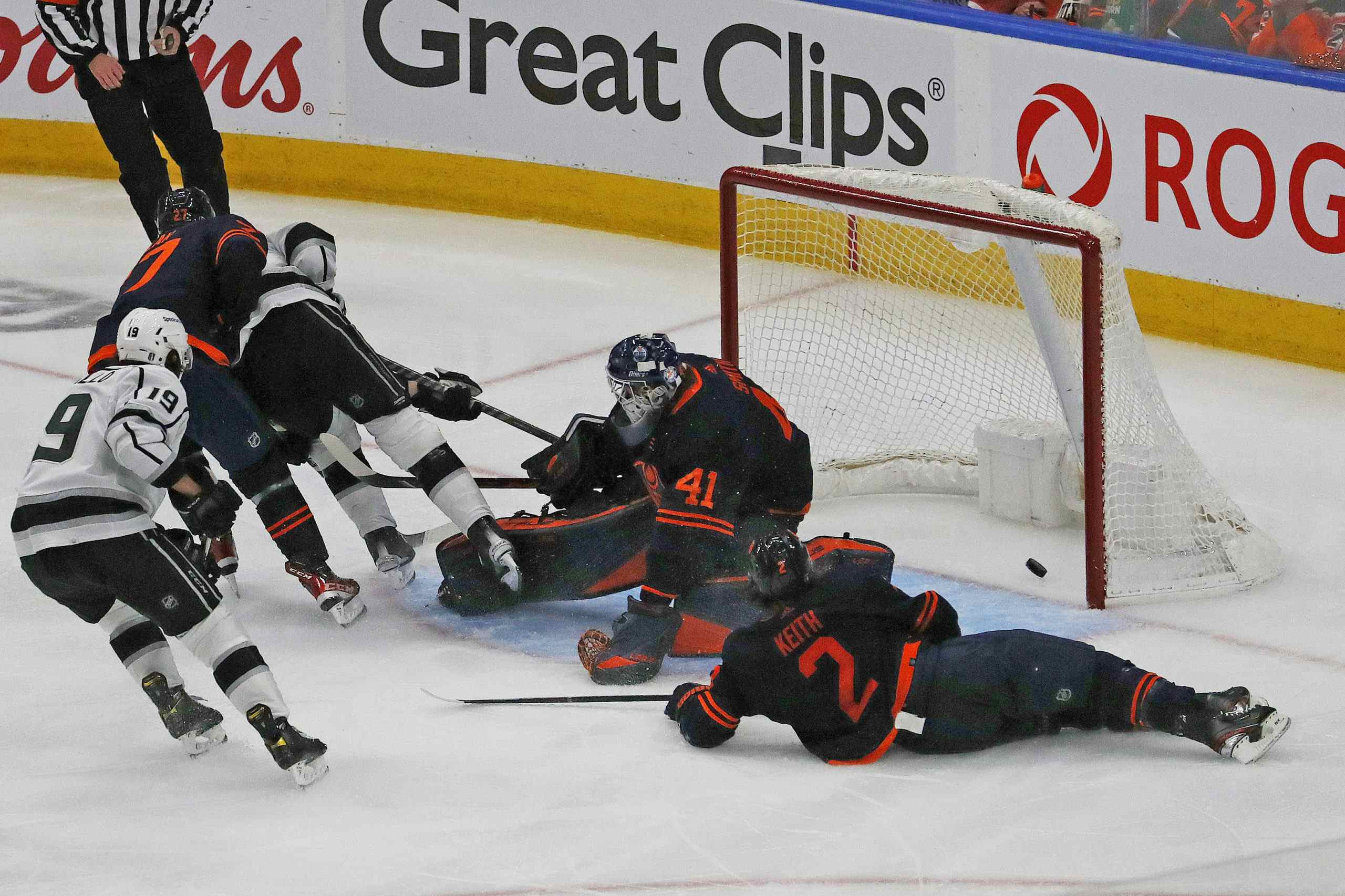The Paajarvi Recall/Non-Recall

The Edmonton Oilers ended up looking a little silly yesterday. First, they recalled Magnus Paajarvi. Tom Renney talked about him playing on the top line with Nugent-Hopkins and Eberle. Then, the Oilers had to return Paajarvi to the AHL after the NHL informed them they’d used their allotted four post-deadline recalls.
What does it mean?
The Paajarvi Camp
I tweeted Gunnar Svenson, the agent for Magnus Paajarvi last night, to ask if the Oilers had offered them any explanation for the abortive recall. His response:
No Jonathan. But the Oilers meant well. They liked to have Magnus up. But the CBA rules could be complicaded (sic)…
It would seem that there aren’t any hard feelings on that end of things, which is probably the most important thing here.
The Actual Mechanics of the Recall

Here is the list of the Oilers’ post-deadline recalls, courtesy of the AHL’s official website, which tracks things like this:
- February 27: Oilers recall Magnus Paajarvi
- March 5: Oilers recall Linus Omark
- March 14: Oilers recall Teemu Hartikainen
- March 24: Oilers recall Chris VandeVelde
- March 30: Oilers recall Magnus Paajarvi
As we can see, there are five recalls. As has been much-publicized, only four recalls are permitted after the deadline.
Two of these transactions in particular are interesting: the February 27 recall of Paajarvi and the March 24 recall of VandeVelde.
Here’s what Dan Tencer had to say about the Paajarvi transaction:
The Oilers had previously assigned and recalled Paajarvi as a paper transaction to get him eligible for OKC playoffs.
That’s the transaction that many forgot about – because Paajarvi never really went anywhere. The Oilers simply wanted to ensure that Paajarvi could play in the AHL without actually sending him down. The irony is that Paajarvi didn’t end up playing another game for the Oilers under his paper recall – the Oilers sent him down (in what turned out to be for good) on March 1 without him dressing once more. So, the Oilers could have sent him down with no negative consequences then, and not have burned one of their four recalls uselessly.
Derek Van Diest has suggested that the Oilers felt the Vande Velde recall was an “emergency” recall (recall –hehe- that he was brought up to fill in for Shawn Horcoff after the latter injured his back) but as Tyler Dellow explains that defense makes literally no sense:
Where I would assume that this gets problematic is that, come Wednesday night, Horcoff and Petrell are good to go. Omark and Vande Velde are healthy scratches. At which point, the Oilers are in breach of 13.12(m)(i) because they haven’t returned Vande Velde promptly to OKC. How do you resolve this? It appears that the NHL took the utterly reasonable route of simply treating Vande Velde as the Oilers fourth recall in the post trade deadline period.
Who made the mistake? Terry Jones, to his credit, asked Kevin Lowe for the answer to that one. Here, in part, is what Lowe told him:
“It wasn’t Tambellini at all. And I’d hate to see Ricky [Olczyk, the Oilers’ assistant general manager] take a hit on this. He is impeccable when it comes to dealing with all of this.”
Lowe also took time to complain about the rule (he described it as “ludicrous”) but that’s really irrelevant window dressing. Regardless of whether the Oilers like the rules or not, they’re responsible for understanding the rules and following them.
Does It Matter?
In the grand scheme of things, will the Oilers’ failure to recall Magnus Paajarvi have any impact on the team’s ability to win games, on the long-term viability of the rebuild, or anything else? No. All it means, from that standpoint, is that the Oilers don’t get to keep Paajarvi for a short-term cup of coffee in a meaningless season.
The Oilers do end up looking silly. That isn’t good but it’s hardly the end of the world, either.
The real question that this raises publicly is whether or not the Oilers front office is especially good at what they do. This isn’t the first time the question has come up. From my profile of Rick Olczyk, a brief history:
As with any assistant general manager, we don’t have a full-picture view of Olczyk – the majority of his decisions and takes on things are spelled out internally and unlike with a team’s general manager we can’t really determine what those decisions were from the direction of the team. There are, however, some interesting points. One of the interesting things to come out of the Dany Heatley boondoggle was the fact that apparently both the Oilers and Senators were confused about when Heatley’s bonus was payable, which reflects badly on Olczyk. Then there was the time the Oilers may have been confused by Gilbert Brule’s waiver eligibility. Then there was that time that someone high up in the organization didn’t know how long the team had to sign Teemu Hartikainen. Again, it needs to be emphasized that we’re constructing a picture based on glimpses, but those sorts of things look really bad.
Again, it needs to be emphasized that the picture we’re getting is far less than whole. I certainly don’t feel I’m in a position to objectively evaluate Rick Olczyk’s job performance; I simply don’t have the information to do that. To my knowledge, nobody outside the Oilers’ organization has the necessary information to do that.
What we do have are these little gaffes. Apparent confusion about the payment of Dany Heatley’s bonus (though the Oilers weren’t alone on that) and Gilbert Brule’s waiver eligibility. There was some definite confusion (from an unnamed Oilers source) on when the deadline was to sign Teemu Hartikainen. And now, an embarassing little incident where they recalled a player they weren’t allowed to recall. None of these things assure us that the Oilers are running a professional shop.
Recent articles from Jonathan Willis





